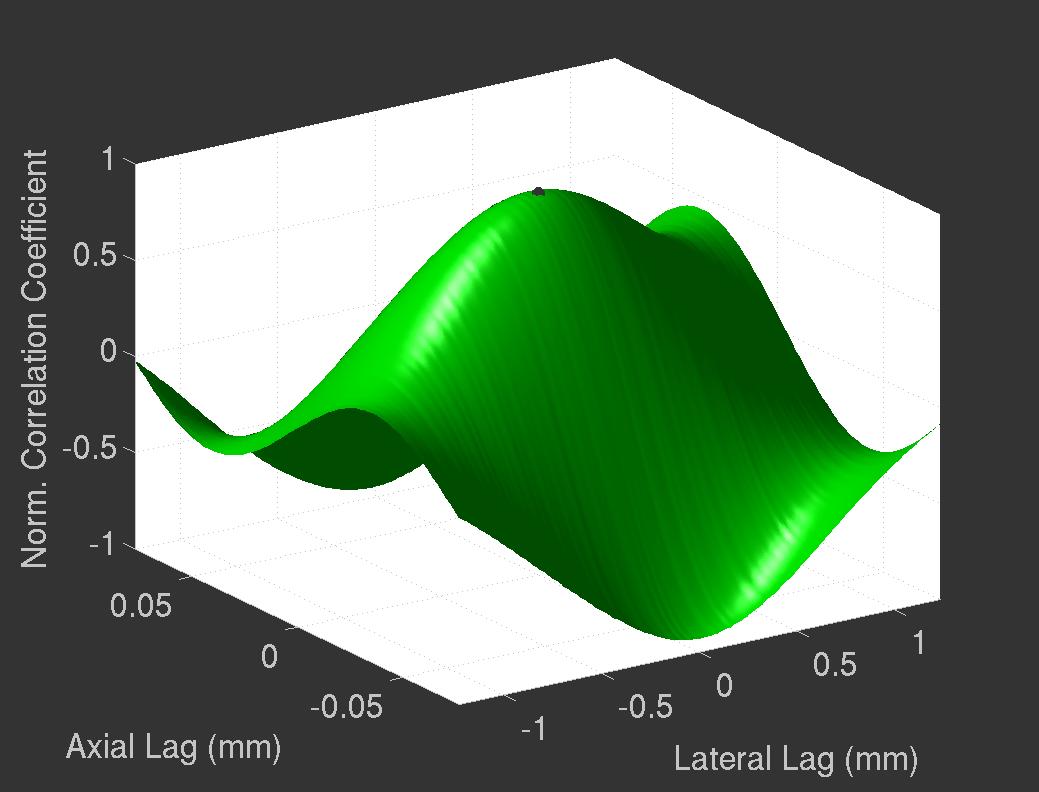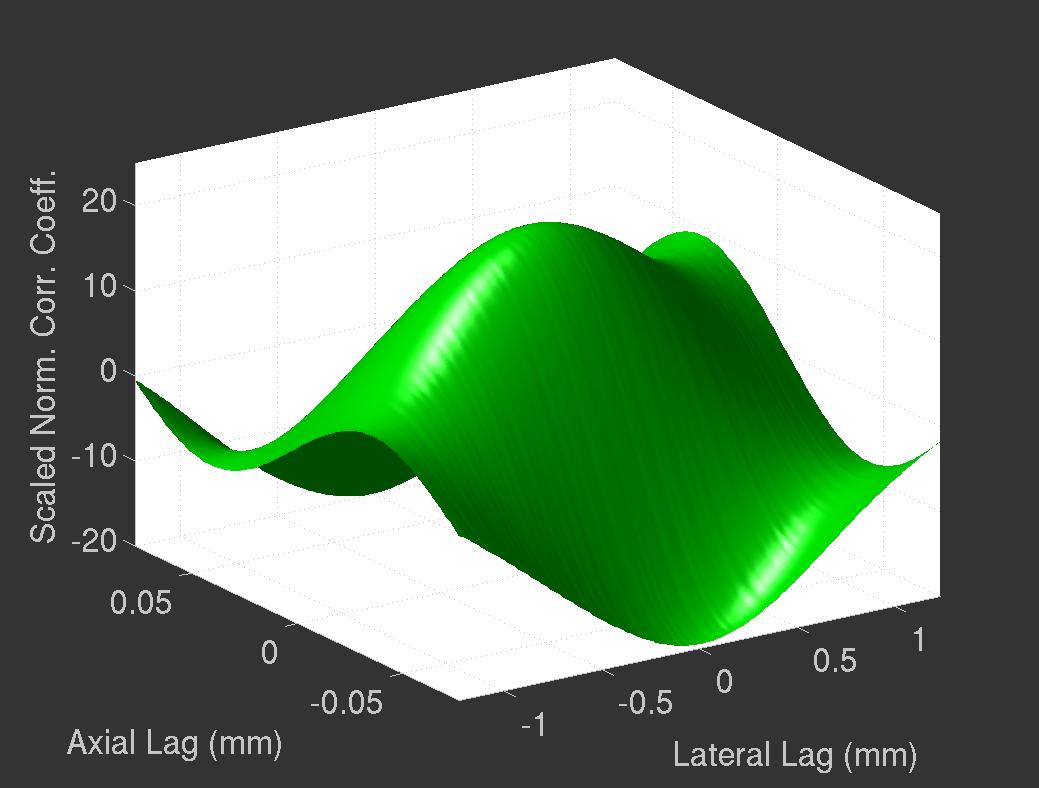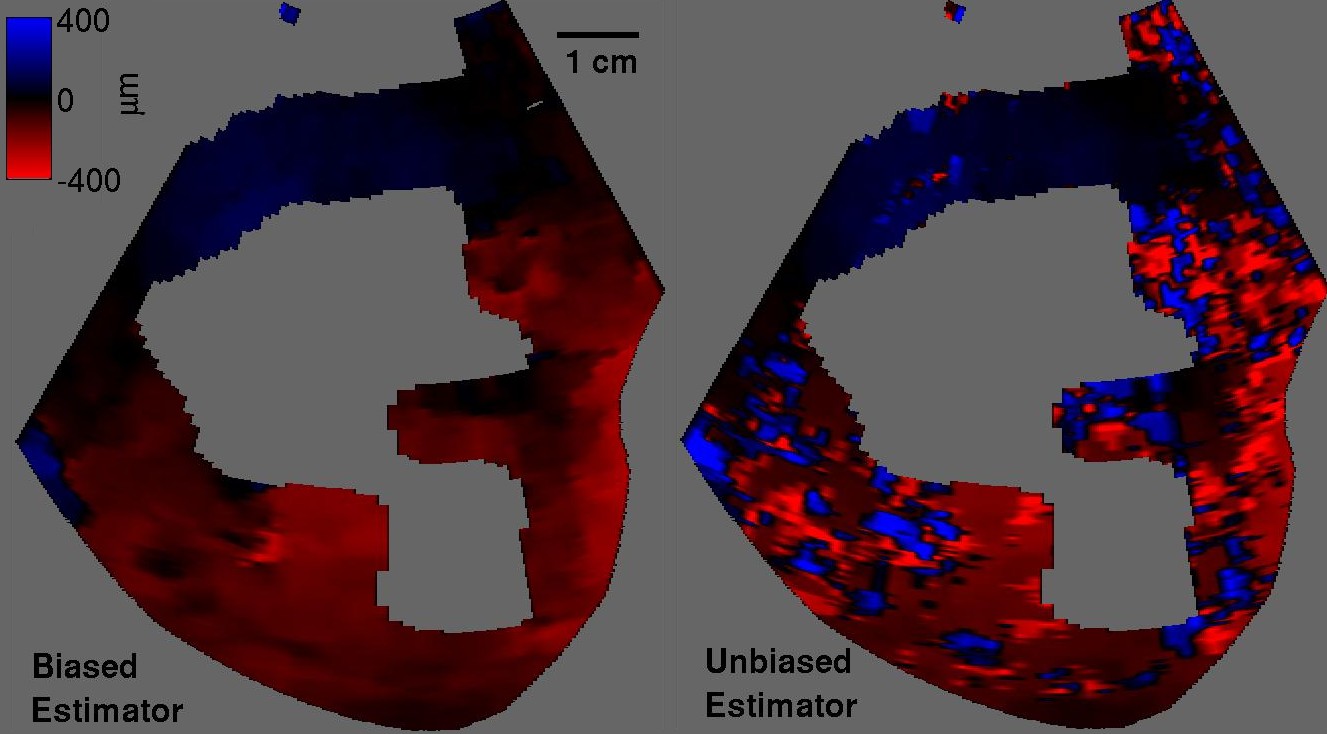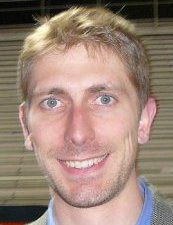
Bayesian Speckle Tracking
The BEAM lab pursues advanced motion estimation techniques. The techniques we pursue are general to all ultrasonic motion estimation tasks, but the tasks of current interest to the BEAM lab are acoustic radiation force induced displacements. This falls under the general umbrella of elastography techniques. A significant characteristic of elastography techniques is variability within the image of motion estimation quality. By quantifying local motion estimation quality it becomes possible to appropriately weight the data driven motion estimates against other motion information. The method commonly used to combine data information and other "prior" information is Bayes Theorem.
Bayes Theorem requires a likelihood function and information about our prior knowledge expressed as a probably distribution. The important aspect of the likelihood function is it appropriately weights the data based on quality. If the quality of our data is perfect then the likelihood function should be a delta-function and our prior information can exert no effect on our result. If our data quality is perfectly bad then our likelihood function should be completely uniform and our final estimate is completely influenced by our prior knowledge.
An example of the forming of a 2D likelihood function converted to a probability distribution using a non-informative prior is shown below. First, a 2D normalized cross-correlation function from an example data set is shown.

The normalized cross-correlation function is scaled based on data quality.

Finally, the scaled normalized cross-correlation function is evaluated as the argument of the exponent. This result is scaled to produce a probability distribution.

Most of our current research focuses on effectively incorporating prior information.
Several examples of Bayesian speckle tracking are shown below.
First, axial displacements are shown for a traditional displacement
estimation scheme and Bayesian speckle tracking. The Bayesian speckle
tracked estimates are referred to as biased estimates in the figure.
 Second, an ARFI displacement estimation comparison is shown. The ARFI
displacement estimates are significantly improved by Bayesian speckle
tracking to the point where gradients in the acoustic radiation force
pushing beam are visible.
Second, an ARFI displacement estimation comparison is shown. The ARFI
displacement estimates are significantly improved by Bayesian speckle
tracking to the point where gradients in the acoustic radiation force
pushing beam are visible.

More recently, we've been applying our methods to enable simpler hardware for shear wave speed like estimates. Details coming soon!
Brett Byram

Office: SC 5905
Phone: (615) 343-2327
b.byram _at_ vanderbilt.edu